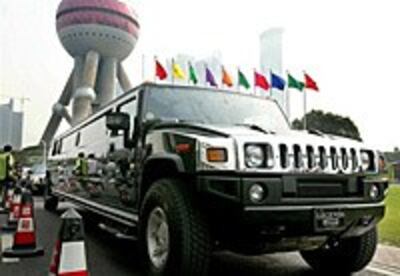
As China’s economic boom leaves the poor farther behind, the country’s press may be paying more attention than ever before, analysts say.
According to the Chinese Academy of Social Sciences (CASS), the gap between rich and poor "has widened dramatically over the past 20 years," the official Xinhua news agency said Jan. 7.
Nearly 90 percent of respondents in a survey by the official China Youth Daily and Sina.com were alarmed by the gap, while more than 80 percent believe it should be corrected, according to Xinhua.
The top 10 percent of China’s families now own over 40 percent of all private assets, while the 10 percent at the bottom own just 2 percent of that wealth, the CASS report said.
The average income of residents in Beijing was more than eight times that of farmers in western Qinghai province in 2005, according to figures cited by the CASS study.
Experts say the rising disparity is the result not only of unequal wages but of China’s investment-led economic boom, which rewards those who can afford to buy apartments and real estate in coastal cities like Shanghai.
What the government can and is willing to do remains to be seen.
Growing concern
Inequality is also becoming more visible in the sales of private cars. Though the China Association of Automobile Manufacturers reported that car sales soared in China during the last year, private cars remain far out of reach for most rural residents.
In interviews with Radio Free Asia, China analysts said the CASS report appears to point to growing concern in China over issues of wealth distribution and social justice.
It is unclear, though, whether the country’s press has gained more freedom to report on social and economic problems.
David Bachman, a political science professor at the University of Washington’s Jackson School of International Studies in Seattle, said that the increase in public discussion of China’s wealth gap may be tied to “elite politics.”
“There have always been articles about inequality or people writing about inequality that don’t seem to have been that clearly censored,” Bachman said. “What’s interesting about the more recent articles is that they seem to be more clearly focused on the leadership’s need to do more.”
“What the government can and is willing to do remains to be seen,” though, Bachman said.
China’s poor 'being left behind'
Bachman noted that the astonishing growth of car sales in China has accentuated the differences between the country’s urban and rural areas.
“We’re talking about urban China becoming an automobile society,” Bachman said, “and I would bet that a very small number of peasants can even imagine owning an automobile, much less actually having one.”
“You’ve reached a point where there is a critical momentum in the urban, industrial, and economic reforms that’s so great that you’re going to continue to build not just a middle class in the Chinese perspective but a middle class in China that’s roughly equivalent to middle classes around the world,” Bachman said.
China’s 700 million poor rural citizens are being left behind, though, Bachman said.
The question now, he added, is how many of China’s poor will see the country’s wealth gap as a spur to greater ambition and how many will give up because the economic inequalities are so great.
Lowell Dittmer, political science professor at the University of California-Berkeley, said China’s press may be reporting more openly on the problems of income disparity because those problems are now self-evident.
“If people know things that are true, and the press doesn’t say them, the press can be simply dismissed,” Dittmer said.
Dittmer noted that the growing number of “mass incidents” in China sparked by social discontent makes it harder for the authorities to treat public complaints as isolated events.
“The usual picture of these rural protests is that they’re isolated things, that there’s no connection between one place and another, one village and another, one protest and another.”
“But I think that may be changing,” Dittmer said. “The protests are increasing. They’re becoming more violent.”
Original reporting by Michael Lelyveld. Edited for the Web by Richard Finney.
